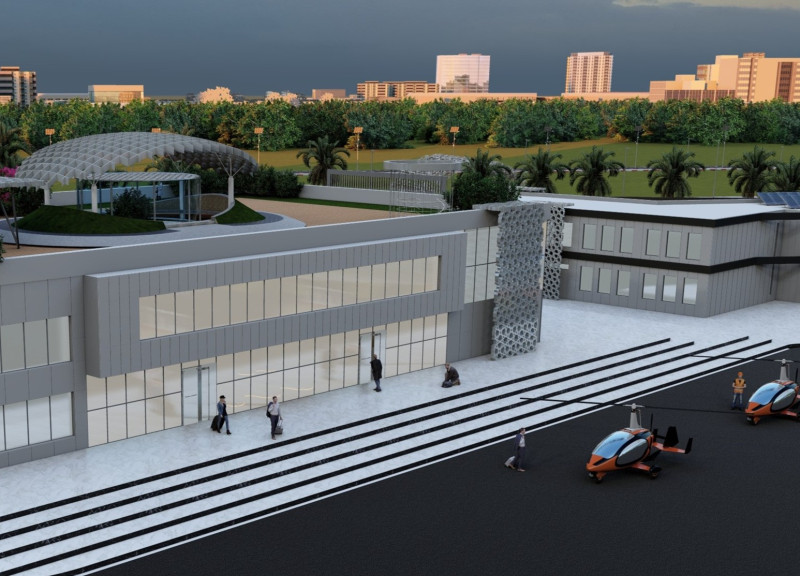5 key facts about this project
At the core of the design concept is the emphasis on transparency and connectivity. The project employs large expanses of glass that invite natural light while creating visual links between indoor and outdoor spaces. This fluidity in design fosters a welcoming atmosphere, encouraging social interaction among visitors. The architectural design cleverly delineates zones for various functions, allowing for both communal gathering spots and quieter, more private areas. This balance between open and enclosed spaces is one of the standout features of the project, allowing it to serve diverse needs while maintaining a cohesive flow.
Materiality plays a critical role in the overall aesthetic and performance of the building. The project predominantly utilizes materials such as reinforced concrete, sustainably sourced timber, and high-performance glazing. The selection of these materials is not only a nod to durability and sustainability but also contributes to the sensory experience of the space. The concrete provides a robust structural framework, while timber elements soften the overall look, introducing warmth and texture. The careful application of glazing enhances energy efficiency, minimizing the need for artificial lighting and reinforcing the visual connection to the surroundings.
The structural design integrates innovative approaches to enhance environmental performance. Green roofs, for instance, are implemented as an effective strategy to manage stormwater and improve insulation, while solar panels contribute to the building's energy independence. The intelligent use of passive design strategies, such as natural ventilation and orientation, further highlights the project's commitment to sustainability. These elements not only reduce the environmental footprint but also enhance the occupants' experience by creating a comfortable and healthy indoor environment.
Unique design elements embedded within the project include adaptive reuse features, which are integrated into the overall layout. Spaces within the building can be rearranged to accommodate varying needs, whether for community events, educational workshops, or private functions. This flexibility exemplifies a forward-thinking approach to architectural design, acknowledging the dynamic nature of community usage and engagement.
The incorporation of local cultural motifs and references is also a pivotal aspect of the design. By drawing inspiration from the historical context and architectural vernacular of the area, the project creates a sense of place and belonging. This careful attention to local character not only enriches the aesthetic experience but also fosters a deeper connection between the users and their environment.
Throughout the project, careful consideration is given to how users will interact with the space. Wide pathways, seating areas, and gathering spots are strategically placed to encourage movement and socialization, transforming the architecture into a living entity that evolves with its community. The rhythm of the design, marked by distinct architectural elements and play of light, guides visitors through the building, enhancing their journey and experience of the space.
In exploring this architectural design project, it is evident that the thoughtful integration of function, materiality, and context results in a space that is both practical and inspiring. The nuanced approach to design invites occupants to engage not only with the space itself but with one another, fostering community bonds and a sense of place. For those interested in diving deeper, reviewing the architectural plans, sections, and designs can provide further insights into the complexities and intentions behind this project. Such exploration can enhance appreciation for the multifaceted approach taken in this well-crafted architectural endeavor.


 Azzedine Benmerbi,
Azzedine Benmerbi,  Fatima Boukemiche
Fatima Boukemiche 




















